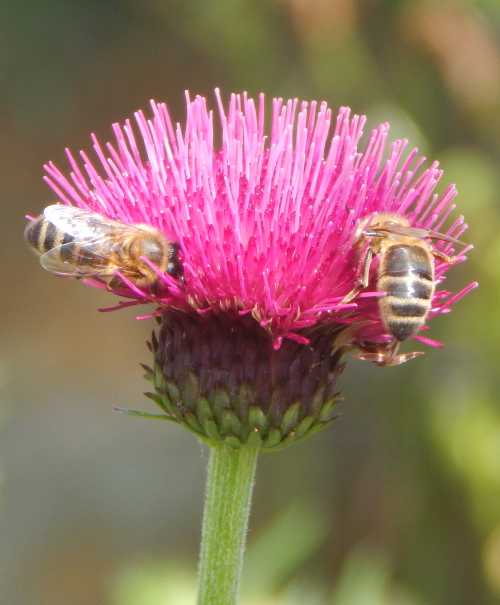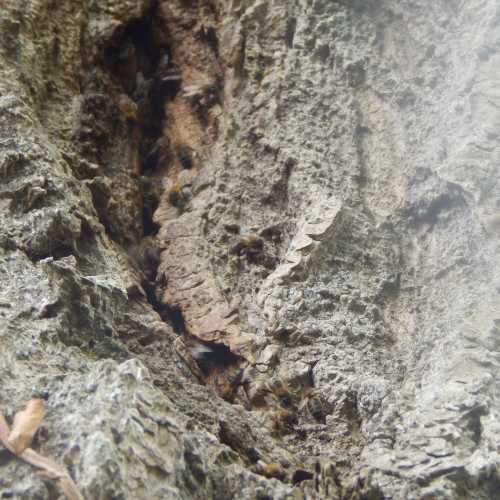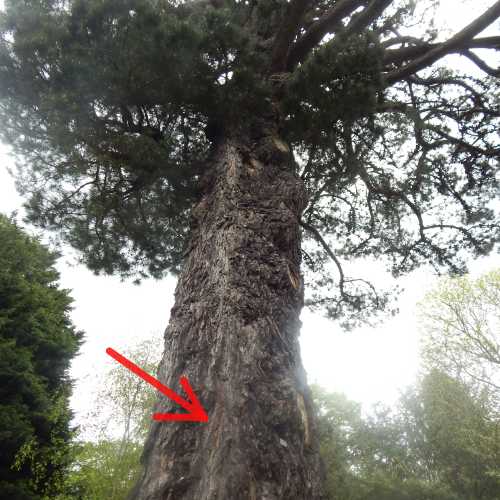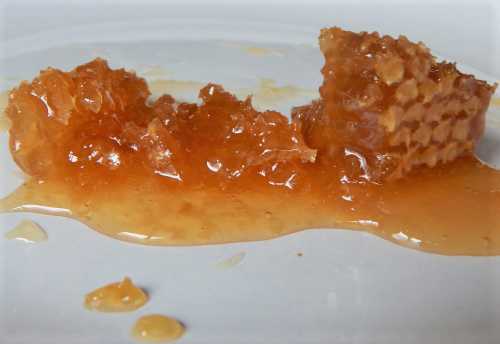Are Honey Bees Domesticated?
It is sometimes said that honey bees are domesticated. I have even heard it said that Apis mellifera is the 'battery chicken' of the insect world.
Sometimes this notion is banded about by those who mistakenly look to the honey bee as the cause of the woes of wild bees, instead of focusing on the real problem: the changes in the environment caused by humans: habitat loss, intensive farming, land management practices including use of toxic chemicals.
(It's worth noting that when beekeeping as a hobby had long been in decline, wild bee populations did not recover, instead there were even extinctions of some species during that period).
Then there are the beekeepers themselves who propose that beekeeping, is in effect, domestication, and therefore, honey bees are domesticated.
But honey bees also live in wild colonies, so can honey bees really be considered to be domesticated?
 Honey bees on Plume thistle
Honey bees on Plume thistle
In his book, The Lives Of Bees, renowned expert on honey bees, Professor Thomas D. Seeley makes a number of interesting points to challenge the notion that categorizing honey bees as domesticated creatures, is really that simple.
Instead, Seeley notes that the human-animal relationship for honey bees is fundamentally different from that for cattle, chickens, and other farm animals.
"Because beekeepers have not made fundamental changes in the genetics of their livestock, in the way farmers and herders have done with their cattle, sheep, chickens and other farm animals, it is a mistake to include the honey bee in the list of animals that are truly domesticated."
However, in view of the fact that beekeepers strongly manage the environments in which their honey bee colonies live, he proposes that Apis mellifera be considered semi-domesticated.
Yet even this term, surely cannot apply to the many wild colonies that inhabit, and have only ever inhabited tree hollows, caves and other non-manmade structures, in remote areas of the world, and even in western countries.
Wild honey bee colonies can survive without human intervention, including during winter - even if they were previously 'kept' by a beekeeper
Not far from where I live, there is a wild goat herd. They are always referred to as 'wild goats', and thought of as undomesticated animals. Yet domestic farm cattle would probably struggle if they had to fend for themselves. Even grass-fed cattle have to be brought indoors and fed dried grass and other feed by the farmer, in order to survive the winter months.
However if a honey bee colony leaves a hive provided by a beekeeper, it is already well adapted not only to survive without human intervention, but also to thrive, often far better than when they inhabit a man-made hive.
Seeley himself also makes this point, as he notes:
"Indeed, most beekeepers have watched in dismay how readily their bees will abandon the former [a manufactured bee hive] for the latter [a home in a hollow tree] during swarming season."
 Wild honey bee nest in a tree crevice
Wild honey bee nest in a tree crevice Location of honey bee nest
Location of honey bee nest
I have observed a wild colony living in the same tree trunk pictured above, for several years, and would refute the notion that such bee colonies cannot survive the winters without human intervention.
For one thing, a wild nest in a tree trunk has better insulation properties to protect the colony during bad weather, than a man-made hive, and Seeley notes a number of ways in his book, which wild nest locations are better suited to the rearing of healthy colonies.
In addition, I have read elsewhere that honey bees are unable to forage during cool temperatures, meaning they would not be able to survive without beekeeper intervention. This is simply untrue, since honey bees can and do forage during cool temperatures, when other bee species are not seen.
What about 'managed wild bees'?
If honey bees are domesticated, or even semi-domesticated, on the basis of being housed and 'managed' by a human, I'd be interested to know how bees in a bee house should be regarded?
For example, there are people who 'manage' mason bee houses - commercially or not. They remove cocoons from the manmade nest tubes to keep them from being infected by mites.
Of course, a bee house can be moved from one spot to another. Some people sell bees like this commercially. They were formerly regarded as 'wild', so what now?
And if these bees are to be regarded as 'semi-domesticated', how are those still living wild, now to be regarded?
Could those bees survive on their own without human interference? Of course they could, they've been doing it forever!
What about bee breeding?
Seeley outlines how humans, in their process of domestication of animals, have controlled genes and manipulated environments to achieve their aims, and he highlights dairy farming as an example.
It's true that honey bee genetics has been the focus of much study. Yet despite a number of successful breeding programs in breeding honey bees to strengthen resistance to disease, and more recently, to encourage hygienic behavior as a defense against Varroa mite, Seeley states that there's no evidence such breeding has altered the behavior of honey bees in a general way.
On the other hand, truly domesticated animals such as dogs, have been profoundly shaped by their domestication, for example, with dog traits whether it be guarding, herding, hunting or sniffing. Likewise, cows have been reared for producing higher volumes of milk.
Yet bee breeders have changed honey bees relatively little, and this is largely due to lack of control, and comparatively little activity in bee breeding.
Added to this, Seeley makes the point that queens mate outside the hive, that drones may come from other colonies, including wild ones, and that most beekeepers do not focus on manipulating the genes of their bees.
In view of this, Seeley says that the work of bee breeders will be erased over time.
Seeley concludes:
"I also suggest we recognize that even though we have pressed millions of colonies of this industrious bee to live under our care, near our homes, and into our service, there remain countless colonies of this marvelous bee living without our care, far from our homes, and apart from our aims.
These wild colonies show us that the honey bees have not yielded their nature to us, for whenever they live on their own, they still follow a way of life set millions of years ago."
If you found this page helpful or interesting, I'd really be grateful if you would share it with others - if not this page, perhaps another, such as Gardening For Bees.
Thank you so much :) .
